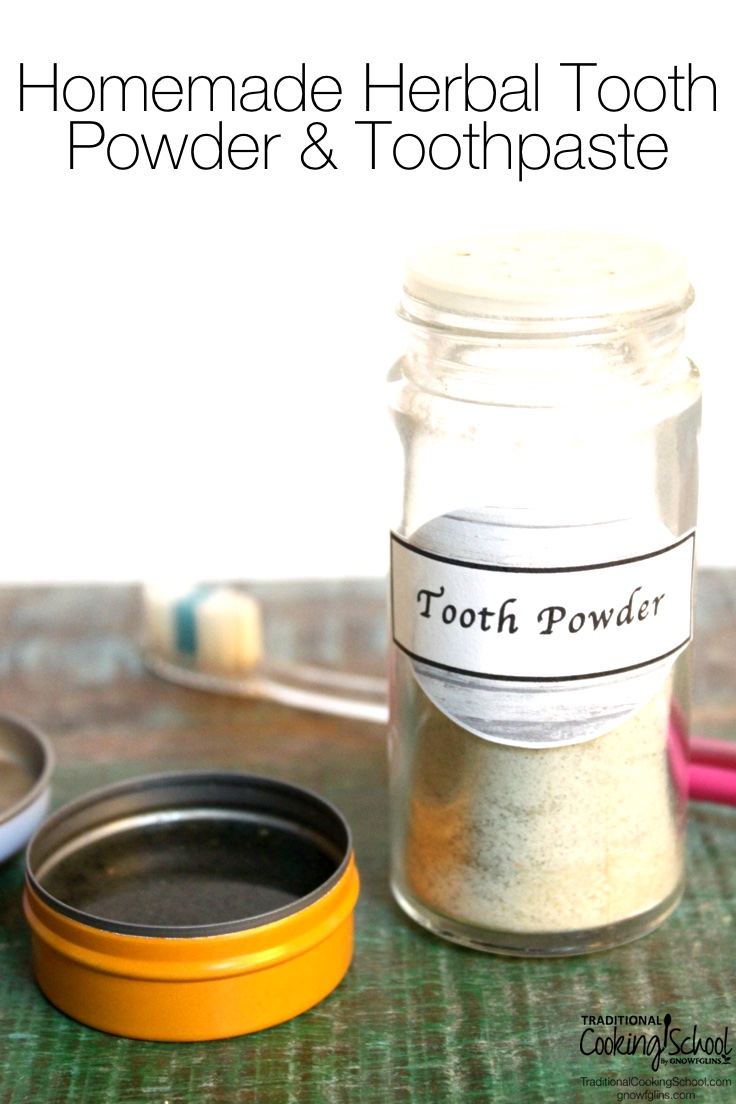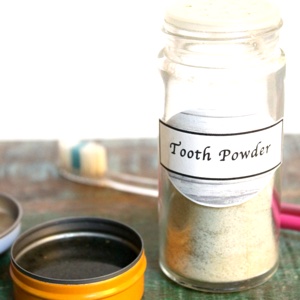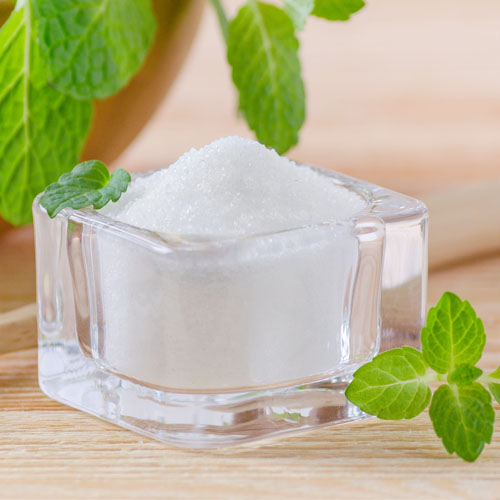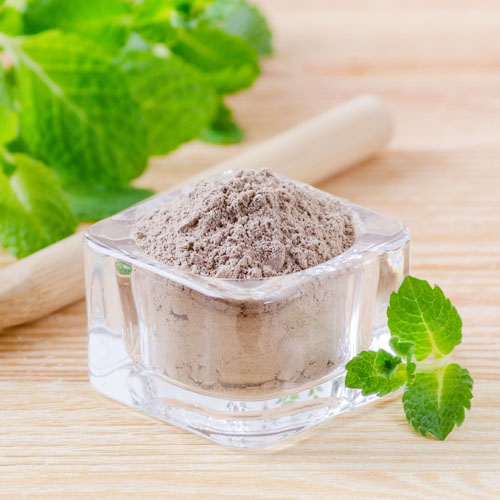
Why would anyone think about making homemade toothpaste? Or homemade tooth powder?
Well… There are actually many reasons.
Like questionable ingredients in conventional products and the high price tag on natural alternatives. Not to mention, the satisfaction of doing it yourself, and knowing exactly what you’re putting in your mouth.
Are you convinced yet? 😉
Recipes for tooth powders and toothpastes abound. Yet sometimes it’s hard to know where to begin.
Today I will share a framework for both tooth powder and toothpaste. Simply use the ingredients you already have on hand. And then brush your teeth with your own personal mix in a matter of minutes!
Why These Ingredients?
Baking soda removes plaque and helps to whiten teeth.
Clay cleanses, polishes, and is full of minerals.
Sea salt whitens and is antibacterial.
Sage, peppermint, cloves, and cinnamon are for flavor. Plus, they have healing and cleansing properties.
Neem is cleansing and antibacterial. Note that it can also act as a contraceptive.
Stevia is for sweetness.
Essential oils can be added for flavor. They also have beneficial properties. Although many feel they are safe to ingest, I personally do not.
Coconut oil heals and is also antibacterial. However, it may be too solid for use during the winter.
Dr. Bronner’s is a great cleanser if you can stand the taste. Mix it with herbs and oils to avoid the feeling of “washing your mouth out with soap”.
My Own Recipes

Homemade Herbal Tooth Powder and Toothpaste
Ingredients
Base Ingredients (pick 1, 2, or all 3!)
- baking soda
- finely-ground calcium powder buy calcium tablets and grind yourself!
- Kaolin clay or Bentonite clay
Optional Base Ingredients (use what you have!)
- sea salt finely ground
- spirulina add by the 1/4 teaspoon
- ground sage peppermint, cloves, and cinnamon
- neem
- powdered stevia extract for sweetness, optional
- essential oils such as peppermint
Liquid Ingredients (choose one or a combination)
- coconut oil too solid to use during the winter months
- pure water or herbal tea such as peppermint
- liquid castile soap such as Dr. Bronner's
Instructions
-
Mix together 2 tablespoons of base ingredients with 3 to 4 teaspoons herbs and add-ins.
-
Store in a container with a shaker lid (spice jars work well for this!).Toothpaste
-
Stir together 3 tablespoons of base ingredients with 2 to 4 teaspoons herbs and add-ins.
-
Next, slowly add enough liquid to make a paste, a little at a time.
Recipe Notes
*Prepare water-based pastes in small batches to reduce the risk of spoilage

My Favorite Homemade Tooth Powder
Ingredients
- 1 tablespoon calcium powder buy calcium tablets and grind yourself!
- 1 tablespoon baking soda
- 1 teaspoon sea salt
- 1 teaspoon neem
- 1 teaspoon dried peppermint
- 1/4 teaspoon spirulina
Instructions
-
Mix together and store in a container with a shaker lid. (Spice jars work well for this!)
Variation...
-
I also like this combination: 1 1/2 tablespoons clay, 1/2 tablespoon baking soda, 1 teaspoon sea salt, 1 teaspoon sage, and 1 teaspoon peppermint.

My Favorite Homemade Toothpaste
Ingredients
- 3 tablespoons clay
- 1/2 teaspoon baking soda
- 1/4 teaspoon spirulina
- 1/4 teaspoon sea salt
- 1 teaspoon dried peppermint
- coconut oil
Instructions
-
Stir together base ingredients and add-ins.
-
Then, slowly add liquids, a little at a time, until you get the right consistency.
Do you make your own homemade tooth powder? What about homemade toothpaste? What are your favorite ingredients?
We only recommend products and services we wholeheartedly endorse. This post may contain special links through which we earn a small commission if you make a purchase (though your price is the same).


Great post and great info! I’m interested in trying the powder. I could do with a whitening formula but have been afraid to try the conventional methods for fear of doing something harmful to my teeth.
Powder is a great place to start in making your own toothpaste, it’s so quick and easy to mix up and use! I notice a big difference in how white my teeth are when I use baking soda in the recipe…I know lots of people put peroxide in their toothpaste for whitening, but I don’t like the idea of putting that in my mouth, either!
I have been using baking soda & peroxide to brush my teeth for years. I gargle with peroxide. Nothing works better.
You can add in some activated charcoal to help with whitening. I have been using it in my tooth powder for the past six months or so and I can see it making a difference.
I am interested in the tooth powder idea. I have never heard of this. How do you use it?
Hi Sarah, You just sprinkle it on a damp toothbrush and brush away!
I am keen to try this but have no idea how to use it. You say to ‘sprinkle’ the powder onto the toothbrush. Doesn’t this waste a lot?
I tip the jar on an angle and gently sprinkle the powder over the brush. A little does get sprinkled on the sink, but most of it ends up in the brush. You could also wet the brush and then dip it into the powder, but I prefer the sprinkling method.
Or you could use ur fingers to take that amount of the powder and apply it directly in your teeth uniformly and then brush it to avoid the wastage problem.
I would like to use herbs; can I use fresh sage for example or must the herbs be dried?
Also, you say that tooth powder has “no actual contact with the toothbrush”. How could this be? Is the brush not used?
I remember tooth powders when I was a kid. We would would tap some powder on the wet brush and then brush normally as with tooth paste.
Sorry for the confusion, Scott. What I meant was exactly what you said, that you sprinkle it on the toothbrush, and therefore the remaining powder in the jar has not been in direct contact with the brush. Unlike homemade paste where you have to dip the toothbrush right in the mixture to get it on the brush, which means everyone needs their own pot or you have to be okay with other people’s brushes dipping in your toothpaste.
As for the herbs, I haven’t tried fresh and am not sure how well it would work. I found with dried if I didn’t grind them up into a fine powder then when I was done I would have bits of green in my teeth, which sort of defeats the purpose of brushing! If you do decide to try fresh, I would love to know how it turns out!
Why do you use spirulina?
Spirulina is full of vitamins and minerals which are good for your teeth. Many say that adding it to your toothpaste can help to remineralize your teeth. I don’t know enough about the research to know if it works that way, but I figure it can’t hurt to try!
you never mentioned how long this keeps in fridge or out of it
Hi Cecile,
The powder should last indefinitely. I make the paste only in small batches and store it at room temperature. I haven’t had any spoil yet.
What is neem and why do you use it? I have heard of neem oil but not a powder. Also if making toothpaste you could add liquid trace minerals to the mix …just a thought
Neem is an herb that has long been used as a dental aid. Traditionally, the branches of the neem plant were chewed on as sort of a natural toothbrush. I use powdered neem leaf in my toothpaste. I am not an expert, but have read that neem oil may be too potent for this purpose, although others swear by it.
Liquid trace minerals sound like a great addition! Thanks for the suggestion.
Neem oil is best known as a natural insecticide.
Yes! I know many gardeners who use it in their gardens! The leaves are much less potent than the oil, which is made from the leaves, bark, and nuts.
Need is widely used in India for oral hygiene. It’s also reputed to be for birth control, although I have no idea how true this is, so don’t quote me on that! Just thought I’d add it in because some may be using it for their teeth, yet it may be affecting their ability to conceive.
Again, don’t quote me on it. Please everyone do their own follow up research. “Google zat!” as my brother in law’s mother says!
Sorry, **neem**!
Hi Andrea!
Great info. We already make our own toothpaste, but your suggestions regarding the herbs and clays you can use are interesting, I’d like to try them. As for the toothpaste, in winter I use half the amount of coconut oil and substitute olive oil for the other half.
In summer I often place it in the fridge as it gets to warm even for only the coconut oil to make an acceptable paste (think baking soda at the bottom and oil on top of it).
We all use the same jar of toothpaste, we just scoop it out with a teaspoon and put it on a toothbrush.
Our favourite ingredients are 2 tbsp baking soda, 1 tbsp coconut oil, 1 tbsp olive oil, 1 tbsp finely ground dried peppermint and about 1/4 tsp ground cloves, but…. now we have to try some of your suggestions ;o)
Thank you so much for your comment! I have been playing around with ingredients that would make the coconut oil less solid, but never thought of olive oil. I am going to try that in my next batch. And thank you for sharing your recipe, too!
Is there a recipe for a toothpaste for sensitive teeth?
I don’t have a specific recipe for sensitive teeth, although I have noticed that since switching to homemade toothpaste and mouthwash I don’t experience sensitivity anymore. Herbs recommended for sensitive teeth include cinnamon, clove, white oak bark and myrrh. A good herbal mouthwash should help, too. Tinctures of myrrh, propolis, echinacea and goldenseal in a mouthful of water can help heal teeth and gums and relieve pain. I have also read that sage and thyme tea can be helpful if drunk regularly. Hope that helps!
I just mix coconut oil and baking soda, and once or twice a week peroxide with baking soda.
In place of essential oils for toothpaste, I use peppermint oil that is used for cooking, or clove oil found in the pharmacy. Just a few drops makes the paste taste great! I have even used peppermint extract but prefer the oil. My sister gave me the peppermint oil and I’m almost out, so I’ll have to search in cooking or baking supplies for more!
Great tip, Sadie! Thank you!
When you say to add peppermint, in what form? You say you don’t want to use essential oils, but how do you add peppermint to your tooth powder, the more nonperishable form?
I use dried peppermint leaf. It’s not as strong as an essential oil would be, but still adds a nice minty flavour. I know others who have used peppermint extract, although I have not tried that myself.
Thank you so much for your post. I have been making toothpaste for many years now about 30 actually. Other options are to make more of the toothpaste is to add in vegetable glycerin – act as preservative and sweetens, organic essential oils of peppermint, clove, and cinnamon, herbal extracts of echinacea, Spilanthes, and Blood Root, calcium carbonate, salt and baking soda.
Glycerin interferes with the absorption of the minerals in the toothpaste.
Liquid stevia might be a better option if you like it sweeter or want a paste instead of a powder.
You can even get it in flavors.
HTH
Fyi, if you used whipped coconut oil you can use it all year long!
Hi i saw your comment/reply about coconut oil…. I am new to this homemade toothpaste and im really looking to make my own as a friend just bought a toothpowder online. She decanted me a bit but i struggled to use it and had the idea of adding coconut oil (which i use for everything!) and this worked. So we are going to make our own…. However canbyou tell me how long a shelf life just powder would have and how long a shelf life powder mixed with coconut oil would last as we would like to make one large batch each.
Hi Shell,
Dried herbs stay fresh for about 6 months to a year, so the powder by itself would have a similar shelf life. I’m not sure about a coconut oil version as I only ever make small batches.
Hello, I’ve been thinking of making my own toothpaste since I enjoy making other cometics products too. I am only hesitant because I’ve read that baking soda and clay are highly abrasive and can harm enamel. Could you share your experience? Have you been using the toothpaste for a long time without your teeth being damaged?
Veronika, I’m sorry, we haven’t heard any feedback like that about tooth powders or clay/baking powder. Where did you hear this?
Anyone reading this: do you have any experience or thoughts about long-term use of tooth powders? Thank you!
Hi Wardee! I was curious about using clays. I read from a fellow blogger (Bumblebee Apothecary) that clays have been found to contain Aluminum. Do you know any research that supports this? I used to use the coconut oil based toothpaste but was having trouble with it clogging our pipes. I since switched to the powder, but now really concerned about aluminum?! Yikes! Please chime in with any info you have to share. I respect your insight and cherish you wisdom. I’ve so enjoyed your website over the years! Thank you so so much! It truly takes a village 😉 !
Clays do have trace minerals. I would not be concerned if you are spitting it out.
~ Danielle, TCS Customer Success Team
What should I use neem leaves or neem sticks
Hi Rishabh, we recommend neem leave powder. ~ Vicki, TCS Customer Success Team